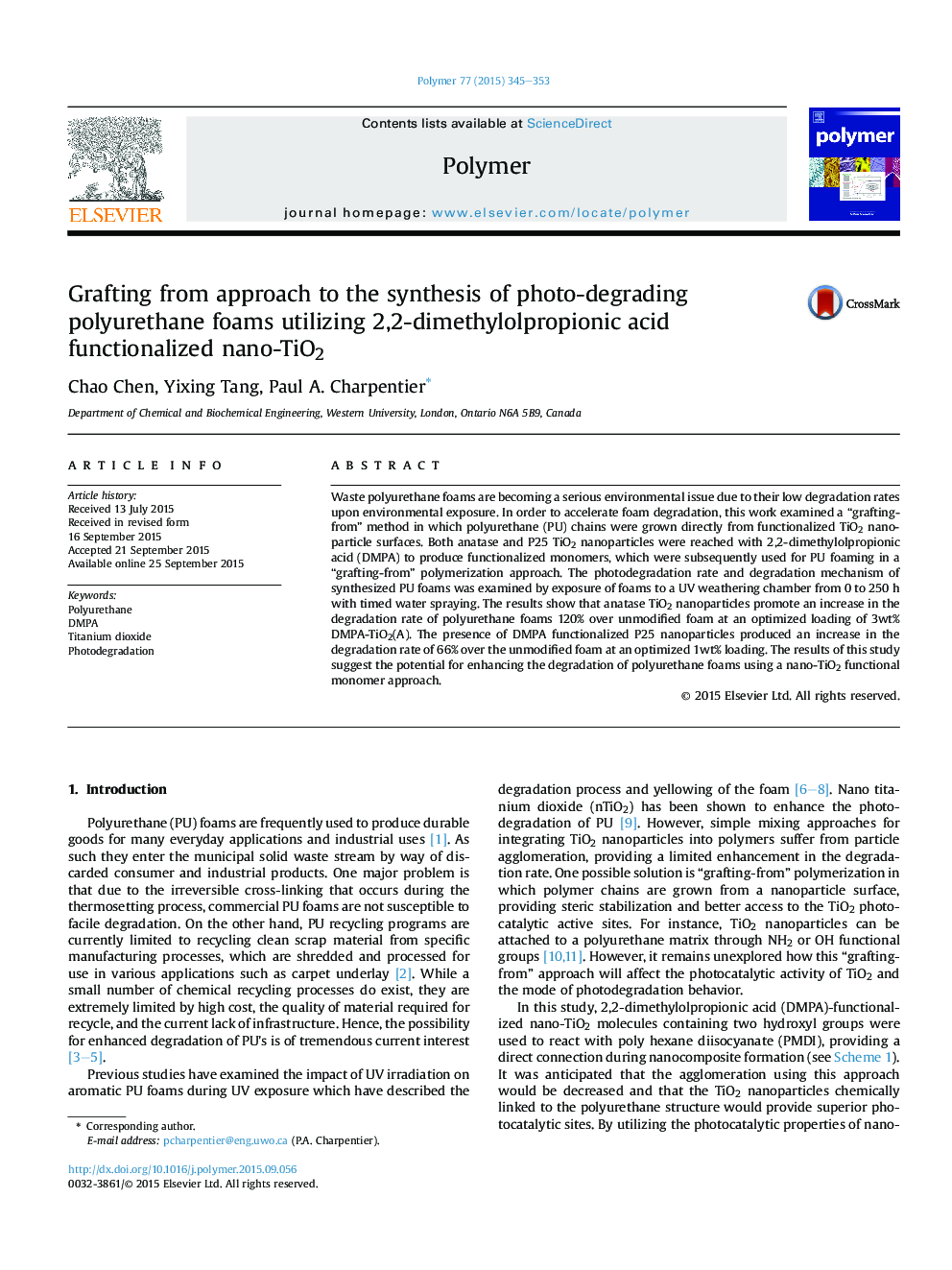| Article ID | Journal | Published Year | Pages | File Type |
|---|---|---|---|---|
| 5179913 | Polymer | 2015 | 9 Pages |
â¢Bifunctional monomers were prepared of DMPA functionalized anatase nanoTiO2 and P25.â¢Polyurethane/TiO2 foams were successfully prepared with excellent nanoparticle dispersion using a “grafting from” approach.â¢Both kinetics and the photodegradation mechanism were provided for the polyurethane/nTiO2 foam.â¢Polyurethane foams with a loading weight 3% of DMPA-TiO2 was shown to possess the highest photodegradation rate.
Waste polyurethane foams are becoming a serious environmental issue due to their low degradation rates upon environmental exposure. In order to accelerate foam degradation, this work examined a “grafting-from” method in which polyurethane (PU) chains were grown directly from functionalized TiO2 nanoparticle surfaces. Both anatase and P25 TiO2 nanoparticles were reached with 2,2-dimethylolpropionic acid (DMPA) to produce functionalized monomers, which were subsequently used for PU foaming in a “grafting-from” polymerization approach. The photodegradation rate and degradation mechanism of synthesized PU foams was examined by exposure of foams to a UV weathering chamber from 0 to 250Â h with timed water spraying. The results show that anatase TiO2 nanoparticles promote an increase in the degradation rate of polyurethane foams 120% over unmodified foam at an optimized loading of 3wt% DMPA-TiO2(A). The presence of DMPA functionalized P25 nanoparticles produced an increase in the degradation rate of 66% over the unmodified foam at an optimized 1wt% loading. The results of this study suggest the potential for enhancing the degradation of polyurethane foams using a nano-TiO2 functional monomer approach.
Graphical abstractDownload high-res image (116KB)Download full-size image
